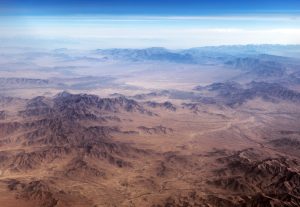On September 23, 2020, then-Afghan President Ashraf Ghani, speaking to the 75th session of the United Nations General Assembly, identified “five sources of unrest”’ in Afghanistan. Along with the COVID-19 pandemic, haphazard industrialization, rampant inequality, and the violence perpetrated by the Taliban, Ghani identified climate change as a source of violence and suffering in Afghanistan. Terming Afghanistan as the 17th worst-affected country, recurrently ravaged by seasonal floods and drought, Ghani called for “regional solutions based on international models” to address the problem of climate change.
Since then, a lot has changed in Afghanistan’s political landscape. However, what has remained constant, and has possibly worsened, is the human suffering brought about by climate change and administrative breakdown. Worse still, apathy by the international community is making matters unendurable.
According to the Global Climate Risk Index, in 2019, the last year the index has data for, Afghanistan was ranked sixth among countries most affected by climate impacts. According to the climate change projections for Afghanistan, developed by Afghanistan’s National Environmental Protection Agency (NEPA) and the United Nations Environment Program (UNEP) in 2015, by 2100 the country will see a strong increase in mean annual temperature coupled with an overall decrease in water availability, impacting the country’s diverse ecosystems. Approximately 80 percent of Afghanistan’s population relies directly on the natural resource base for their livelihoods. These climatic changes can therefore seriously disrupt the foundation of the country’s food security, economy, and stability.
Afghanistan has experienced three consecutive droughts since 2020, each more severe than the last. The cycle of the drought was interrupted by flash floods in early 2023, killing dozens, according to conservative official accounts. Severely parched land loses the capacity to absorb water, which typically leads to such floods when rains come after a long gap. Tourist attractions such as the Band-e-Qargha Lake, on the outskirts of Kabul and a place I used to frequent during my time in Afghanistan, which had dried up completely, filled up, attracting many visitors. However, the overarching experience is far from ebullient for millions of Afghans.
One of the early decisions taken by the Taliban, after taking power in August 2021, was to abolish the National Water Affairs Regulation Authority (NWARA), the government agency set up to look after water management throughout the country. Immediately after the political change in Kabul, many of the technical experts associated with the civilian government fled Afghanistan, fearing for their safety. This exodus also included the head of the NEPA and his deputy. Threats to their lives came not only from the Taliban but also from environmental violators, who had been imprisoned by the previous regime after being reported by the NEPA. They were released by the Taliban.
Before the Taliban takeover, the NEPA had prepared a national climate action plan and emissions inventory. No new agency has been set up to replace the NWARA, nor has the Taliban regime provided any indication about measures it will take for mitigating the impacts of climate change and enacting water governance. None of these, including the promotion of clean energy, is a priority for the Islamic Emirate, which hopes to rule the country under Shariah, or Islamic law. Worse still, media reports have indicated that cash-strapped and cut off from international aid, the Taliban-led government is tapping into the country’s coal mines to boost revenue.
The Taliban takeover amplified the country’s economic crisis and also led to a dwindling of funding from the international community, including for water resources development and climate change mitigation projects. The projects that have come to grinding halt include a $21.4 million rural solar energy project backed by the International Green Climate Fund (GCF), the project to create a national carbon inventory, a $36 million project funded by the Global Environment Facility and others to boost renewable energy, make agriculture and forestry more climate-resilient and safeguard ecosystems, and several green projects worth $90 million in the pipelines.
This precarious situation has made millions, including farmers, more vulnerable to disaster, without any assistance whatsoever from the Taliban regime. A critical lack of infrastructure and leadership to deal with disasters has directly impacted food production, both for domestic consumption and exports. Staple crops of the northern and southern plains and the fruit orchards in the central highlands have suffered massively, unveiling a sweeping specter of mass hunger that is threatening to consume 10 million Afghans, who are no longer covered by the aid provided by the resource-starved World Food Program.
In these circumstances, it is ironic that Afghanistan went unrepresented in the COP28 climate change conference held in Dubai in November-December 2023. This is the third year in a row, since 2021, that a discriminatory policy that seeks to isolate the Taliban hasn’t distinguished between the regime and its victims. The Taliban-controlled NEPA issued a statement regretting the “political factors” that resulted in the Afghan delegates not being extended an invitation to attend the conference.
Afghanistan needs urgent help to deal with the growing climate threats and vulnerabilities. In simple terms, it translates to the international community providing financial assistance and engaging with the Taliban regime in a bid to enhance its capacity to help tackle the challenges of climate change impacting the conflict-ridden country. Such engagement does run the risk of the Taliban using it as a source of legitimization. However, an assessment of the international community’s approach to isolating the Taliban in the past two years isn’t studded with much success. A change of approach in the realm of climate change threats and action by restarting the stalled projects and greater civic engagement, to begin with, can save millions of lives and could also bring about a modicum of moderation within the ranks of the Taliban.

































